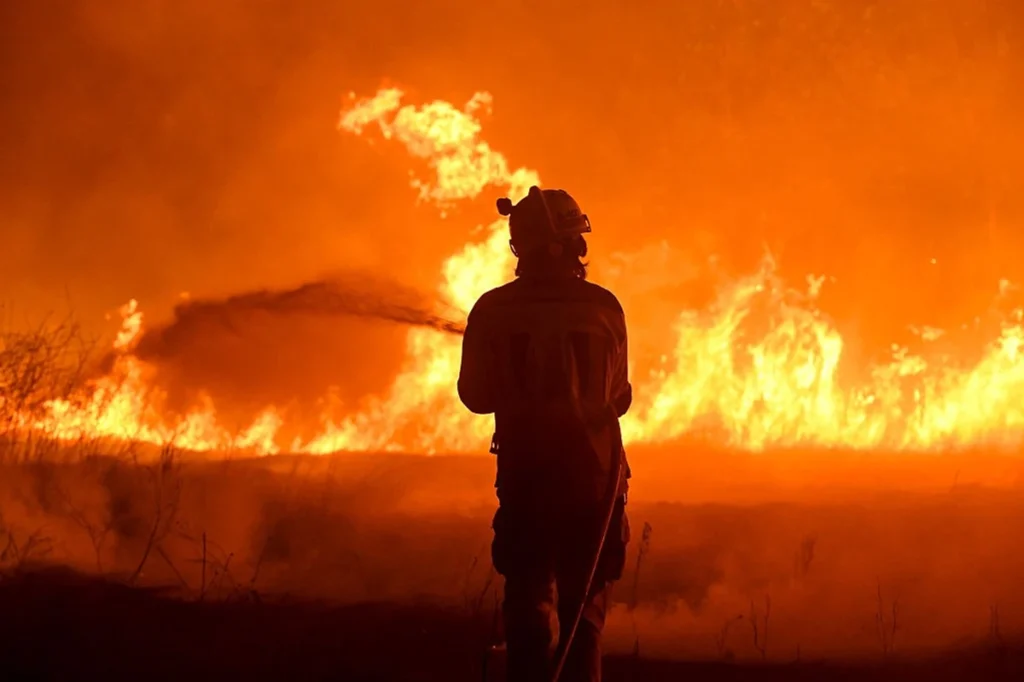Three men have died, and thousands have been displaced as wildfires driven by a severe heatwave swept across southern Europe on Tuesday.
Countries including Italy, France, Spain, Portugal, and the Balkans faced soaring temperatures, with some regions exceeding 40°C, fuelling the fires and raising alarm over climate change’s role in extreme weather events.
In Spain, an employee at an equestrian centre in Tres Cantos, north of Madrid, succumbed to injuries while reportedly trying to save horses from the flames. Another man died fighting fires in Castile and Leon, northwestern Spain.
In Montenegro, a soldier was killed and another injured when their water tanker overturned while battling blazes near the capital, Podgorica. Italy reported a child’s death from heatstroke on Monday.
The Spanish government has responded with evacuations, including around 2,000 people near the popular beaches of Tarifa in Andalusia, where wildfires forced last-minute rescues of residential areas.
Dozens of fires raged in Castile and Leon, threatening the UNESCO World Heritage site of Las Medulas. The region’s government pledged swift restoration efforts once the fires subside.

Portugal’s firefighters were battling three major fires, with over 700 personnel deployed near Trancoso, where residents sounded alarms as thick smoke billowed.
Record temperatures were broken in southern France, leading to heat alerts covering three-quarters of the country.
Authorities banned outdoor public events in the Rhone Valley amid forecasts of prolonged extreme heat lasting up to two weeks.
Italy placed 11 cities, including Rome and Milan, under red alert as heat waves baked much of the country.
Meanwhile, Albania and Greece faced numerous wildfires, with Greece requesting EU aid to combat over 100 active blazes that have forced the evacuation of 20 villages in the Achaia region.
Experts warn that the heatwave and wildfires are clear indicators of climate change intensifying extreme weather.
Nearly half of Europe and the Mediterranean experienced drought conditions in July, with levels reaching record highs since data tracking began in 2012.


 Trending
Trending 


